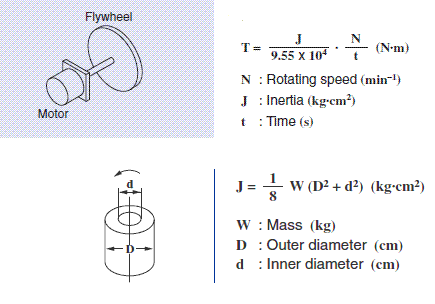- This topic has 1 reply, 1 voice, and was last updated 2 years, 11 months ago by
Hamid.
-
CreatorTopic
-
2021-08-03 at 11:08 am #396
A.Selvakumar
How much KW capacity of motor is required to produce 5560 m3/hr air, how it has to be calculated?
We can easily calculate the power of motor to pump water, but for produce air requirement of 5560 m3/hr by using an air compressor, how much capacity of motor in Kw or HP is required? What are the formulae used to calculate? Please explain -
CreatorTopic
-
AuthorReplies
-
2021-08-03 at 11:08 am #1723
Hamid
Generally some fundamental criteria involved in selecting AC motors such as induction motors shall be considered as following: – First, determine the driving mechanism and its dimensions. And then check the conditions required for the mechanism such as the mass of the load and traveling speed. -Calculate the load torque, moment of inertia and speed which are converted to those at the motor output shaft. -Check the required specifications such as positioning accuracy, holding of position, speed range, operating voltage and other environmental resistances for the mechanism and the machine. -Select the most appropriate motor model to meet the required specifications. -Select the motor and gear head based on the defined speed at the motor shaft, load torque and moment of inertia of the load. -Make sure that the selected gear head and the motor combination meets all of the required specifications including mechanical strength, acceleration time and torque, then make a final determination. For industrial application the following guidelines should be reviewed as part of the application process. 1. The performance characteristics of the motor selected for a particular application must be properly matched to the requirements of the driven load. 2. Usual and typical unusual service conditions are defined in NEMA MG 1. In order to ensure a safe application, any unusual service conditions must be reported to the motor supplier. 3. The motor supplier must be advised if the motor is to be used in a hazardous environment. Include details on zone, groups, division and temperature limits. 4. The motor supplier must be advised if anticipated variations in the power supply voltage and frequency will exceed the standard allowable variations as defined in NEMA MG 1. 5. The motor supplier must be advised if the starting requirements will exceed the standard as defined in NEMA MG 1. 6. The motor must be provided with the proper enclosure for the application. For a safe application, enclosure selection involves not only the operating environment but the degree to which the motor will be exposed to personnel as well. 7. The motor supplier must be advised of any anticipated conditions under which the motor will be required to operate either above or below the normal speed range. 8. The sudden and unanticipated reenergization of a motor using automatic reset protective devices can produce a potentially hazardous condition in some applications. Worst case scenarios involving personnel and equipment should be carefully constructed before applying such devices. Fundamentally we can write: Tm =TJ + Tv + Tc + Tf + Tu where: Tm = torque developed by the motor TJ = torque required to accelerate the inertia of the system Tv = torque required by any viscous friction bloats Tc = constant torque required by the load Tf = torque required by any fluid loading Tu = torque required by any unusual loads However, it is possible that this will be an ill-defined equation. That is, many of the coefficients may be known only approximately, especially if a newly designed machine is being built. Experience with similar machines will very likely be the best guide in estimating some of the coefficients, but even here the application engineer may be led astray. For example, a machine being built to tumble material for drying purposes has a certain superficial resemblance to a cement kiln, but the characteristics of the material being dried may be so different from those of the material in the cement kiln that there will be no meaningful carryover of experiential knowledge from one to the other. Whatever the situation, the engineer making the motor selection should work in a close relationship with the mechanical engineer responsible for the design and construction of the driven machine, or the renovation of an existing machine. Therefore as you see the suitable motor selection is not easy generally. Of course in simple case it may be very easy, for example for determination of load torque of a cylindrical flywheel we can write:
 But in your concerned case, for correct estimation of load inertia we need a lot of information about your actual mechanical and application characteristics. But as I aware from my mechanical engineer friends there are a method to give a rough idea about power requirements for air compression. W = k . V . ln P2/P1 Where: W: Compressor power consumption (KW) K: constant = 202 for air and 167 for gas (mass flow rate of the gas in kg/s instead of free air conditions in m3/s) V: Volumetric flow rate of air at ‘free air conditions’ in m3/s P2: delivery pressure P1: inlet pressure
But in your concerned case, for correct estimation of load inertia we need a lot of information about your actual mechanical and application characteristics. But as I aware from my mechanical engineer friends there are a method to give a rough idea about power requirements for air compression. W = k . V . ln P2/P1 Where: W: Compressor power consumption (KW) K: constant = 202 for air and 167 for gas (mass flow rate of the gas in kg/s instead of free air conditions in m3/s) V: Volumetric flow rate of air at ‘free air conditions’ in m3/s P2: delivery pressure P1: inlet pressure -
AuthorReplies
- You must be logged in to reply to this topic.
